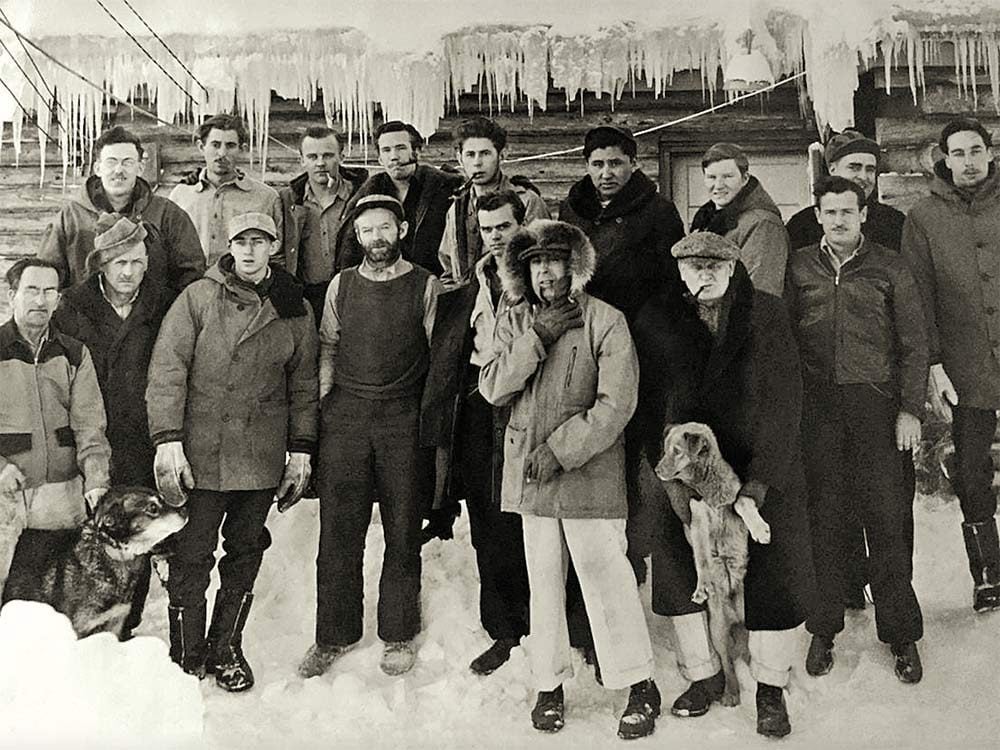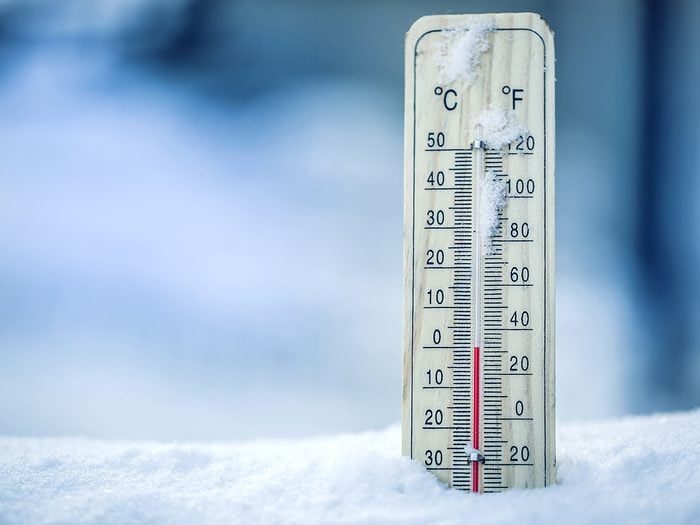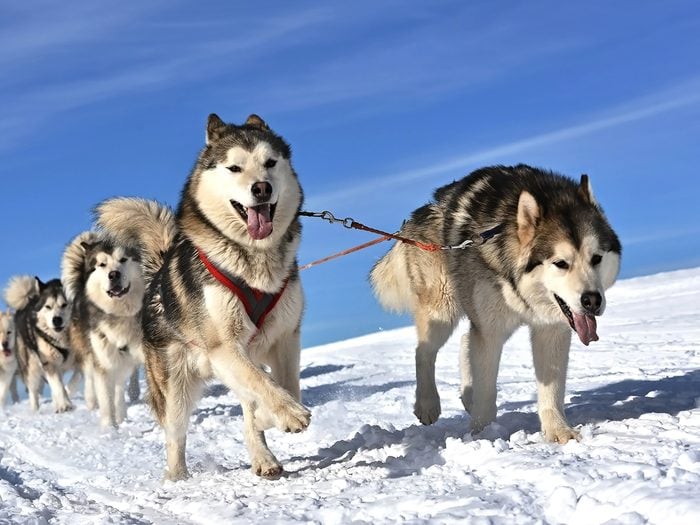
The Coldest Temperature in Canada’s History Was Recorded on Feb. 3, 1947
My father, Wilfred Blezard, joined Transport Canada in 1946, a year after he arrived home from Europe, after serving six years in the Canadian Army. He willingly accepted postings as a weather technician to various northern stations in the Yukon and Northwest Territories, very grateful for the solitude and quietness of these lonely outposts, in sharp contrast to his devastating experiences overseas.
The first weather station my father was posted to was called Snag Airport, located approximately 30 kilometres east of the Alaska-Yukon border, near Beaver Creek, Yukon. He was one of four young weathermen stationed there during 1946-47. Snag Airport was part of the Northwest Staging Route of emergency landing strips and observation stations established during World War II to facilitate travel from Alaska and the Yukon to Central Canada and the United States.
The weather station operated from 1943 to 1966. It was while my father was there that the temperature plummeted to -63°C (-81.4°F) on February 3, 1947, the coldest temperature in Canada’s history, and a record-breaking low for all of North America. He, along with the officer in charge, Gord Toole, had the dubious honour of recording this unbelievable temperature. According to astronomy experts, on that day, Snag was colder than the average surface temperature of Mars. Telegrams of congratulations were received from many countries around the world, with several messages referring to Snag as North America’s new “cold pole.”
Find out why historians refer to 1816 as the “year Canada didn’t have a summer“.

The Coldest Temperature in Canada Was Below the Range of a Thermometer
Mark Twain once remarked, “Cold! If the thermometer had been an inch longer, we’d all have frozen to death.”
My father and Gord Toole immediately noticed that the tiny sliding scale inside the glass thermometer column had fallen into the bulb at the end, well below the lowest reading on the thermometer (-80°F). After marking the thermometer sheath using a fine, sharp file (ink does not flow at that temperature), it was sent to a Toronto laboratory where it was re-calibrated at -81.4°F (-63°C). Three months later, the weather service accepted this as the correct temperature; not only the coldest temperature in Canada, but the lowest official temperature ever recorded in North America. According to my father, the men were excited by the news, saying, “We had to put a little lock on the door to the instrument screen because everyone was rushing out and looking at the thermometers. Even the slightest bit of body heat would cause the alcohol to jump.” Now, all official alcohol thermometers in Canada have markings to -70°C (-94°F), a thermometer redesign due to the coldest temperature in Canada’s history.
Find out which city is the hailstorm capital of Canada.

How Cold Was the Coldest Day in Canadian History?
Just how cold is -63°C? In order to give you a clear idea of the answer to this question, I have chosen to include several anecdotal, once-in-a-lifetime observations, as recorded by my father and Gord Toole in several interviews given over the years since this historic event. Will Snag remain North America’s “cold pole?” Only time will tell.
At -63°C, the people’s voices and barking dogs in the village of Snag could be plainly heard at the airport four miles away. Read on for more extreme facts from the coldest day in Canadian history:
- An aircraft that flew over Snag that day at 3,000 metres (10,000 feet) was first heard when still more than 32 kilometres (20 miles) away, and later, when overhead, still at 10,000 feet, the engine roar was deafening. It sounded like it was in your bedroom! It woke everyone who was sleeping at the time because they thought the airplane was landing at the airport.
- A piece of thin ice, when broken, sounded exactly like breaking glass.
- Ice on the White River, about a mile east of the airport, cracked and boomed loudly, like gunfire, amplified by a cap of warmer air lying over intensely cold air on the ground, bouncing sound waves across great distances.
- The extreme cold air generated intense radio static, much like the crackling sounds heard during a thunderstorm.
- Exhaled breath instantly froze with a hissing noise, and stayed suspended in the air at head level in long vapour streaks several hundred metres long, like miniature condensation trails from a jet aircraft. These patches of human “fog” remained in the still air for three to four minutes, before falling to the ground as powdery ice crystals. One observer found such a trail still marking his path when he returned along the same route 15 minutes later. Becoming lost was of no concern!
- For days, a small fog or steam patch would appear over the sled dogs, at a height of up to six metres. It would disappear only in the warm part of the day when the temperature warmed up to -50°C (-60°F).
- A chunk of ice was so cold that, when brought into a warm room, it took five full minutes before there was any trace of moisture, even when held in a warm hand.
- A cupful of cold water was thrown high into the air, just to see what would happen. Before it hit the ground, it made a hissing noise, froze and fell as tiny round pellets of ice the size of wheat kernels. Spit also froze before hitting the ground.
- At such temperatures, metal snapped like ice, wood became petrified, even paper became brittle and rubber was just like cement. The sled dogs’ leather harnesses would break if bent.
- After seconds outdoors, nose hairs froze rigidly and your eyes would tear. Facial hair and glasses become thickly crusted with frozen breath. You had to be careful not to inhale too deeply for fear of freezing or scalding your lungs from the frigid air. The only other discomfort caused by the cold were numerous cases of beginning frostbite, particularly the familiar “ping” as the tip of one’s nose froze. “It was easy to freeze your nose at -70°F without even knowing it was cold.” (Here are the signs of frostbite you should never ignore.)
- The animals didn’t appear to suffer too much during this two-week spell when the temperatures never climbed above -53°C. Two horses, owned by a local trapper, used to visit the cookhouse every morning. It was amazing the things they would eat: apple pie, wieners, buns and cakes, and as an extra treat the cook even fed them ice cream one morning at -60°C. During their wandering around outside, almost 20 centimetres (8 inches) of ice would build up on their hooves, making it look like they were up on stilts.
- The stamina of the sled dogs was truly remarkable. They never bothered to go into their kennels, preferring instead to lay on top of their kennels, curled up with their heads tucked in towards their bellies. A band of frost fog formed over their heads, keeping them reasonably warm.
- Starting machinery was a chore. Getting an engine started was no guarantee it would continue to run. At that temperature, the oil and transmission fluid would coagulate into something approaching a solid.
- And finally, truck tires could splay open when they hit ruts in the road.
Next, take a look back at the worst snowstorms in Canadian history.